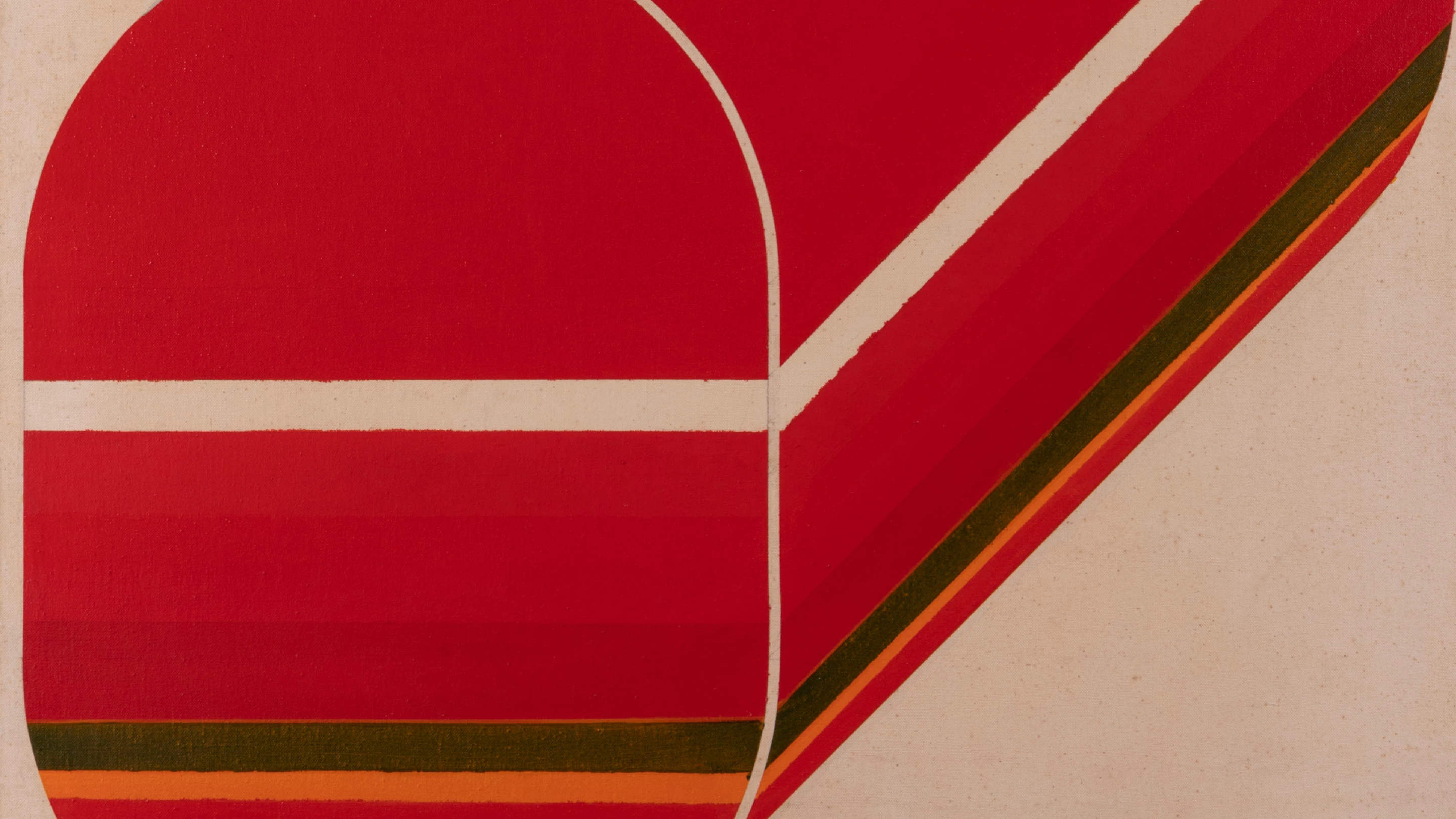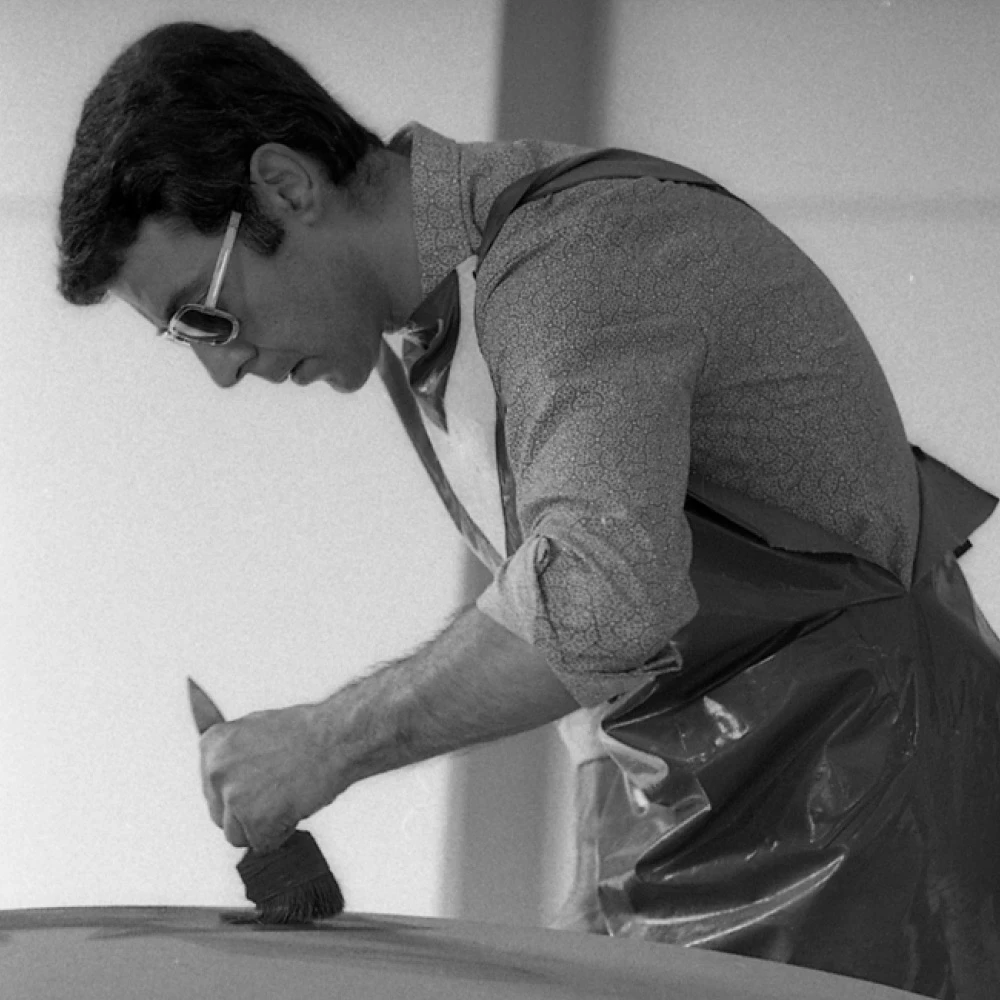Rodolfo Aricò was born in Milan on 3 June 1930. Between 1946 and 1950, he attended the Brera Liceo Artistico, where he was thought art history by Guido Ballo, and studied architecture at the Milan Polytechnic University from 1951 to 1955. Aricò combined his academic studies with an interest in philosophy – particularly in Edmund Husserl’s phenomenology – and painting, drawing inspiration from the work of Wols and Arshile Gorky.
In 1958, Aricò met the art gallerist Carlo Grossetti, who presented the artist’s first solo exhibition at the Salone dell’Annunciata in Milan the following year. In the late 1950s, Aricò placed the pictorial action at the centre of his work, starting to focus on geometry. In 1964, he took part in the XXXII Venice Biennale, where he exhibited Trittico dell’Esistenza. In 1965, he participated in the IX Rome Quadriennale, where his Work in Progress: Le “simultanee forme” di Delaunay was purchased by the Galleria Nazionale di Arte Moderna. In the same year, Roberto Sanesi wrote the monographic volume Reperti: per uno studio sulla pittura di Rodolfo Aricò.
Starting from 1966, Aricò inaugurated a new phase of research, characterised by the creation of pictorial works on shaped canvases. In 1967, the Galleria L’Attico in Rome gave him a solo exhibition, with a catalogue text by Giulio Carlo Argan. The following year, Aricò was awarded a room at the XXXIV Venice Biennale, where he created an environment of large works revealing the structural nature of his object-paintings. In 1969, the Deson-Zaks Gallery in Chicago staged Aricò’s first solo exhibition outside Italy. His works from the 1970s were executed by spraying paint on the canvas, creating an impalpable, apparently monochromatic surface. During this period, Aricò’s research veered towards a humanistic reinterpretation of the history of art as well as of perspective, conceived as the founding moment of pictorial investigation. In 1971, the artist was appointed to teach set design at the Urbino Academy of Fine Arts. In 1974, Roberto Sanesi gave him a retrospective exhibition at the Centro Internazionale delle Arti e del Costume di Palazzo Grassi in Venice. In 1978, Aricò exhibited Scena di Ravenna, a monumental work combining painting, set design and architecture, in a group exhibition at the Ravenna Pinacoteca Comunale. In 1980, he investigated the relations between architecture, painting and myth in a group show at the Casa del Mantegna in Mantua, where he presented Scena di Mantova.
Throughout the 1980s, Aricò taught set design at the Milan Brera Academy. His works were exhibited at the Venice Biennale both in 1982 and 1986, and included in international shows, such as Arte Italiana 1960-1982 at the London Hayward Gallery in 1982 and 1960/1985 Aspetti dell’arte italiana, first held inFrankfurt in 1986 and, subsequently, in Berlin, Hannover, Bregenz and Wien. In 1983, Aricò presented recent works, along with paintings from 1967-1970 in a monographic exhibition at Milan’s Padiglione d’Arte Contemporanea. In January 1987, he exhibited at the Studio Marconi in Milan what he himself defined “a-structural works”.
Throughout the 1990s, Aricò had a series of solo exhibitions – two of which were organised in 1993 and 1998 in Milan, at Lorenzelli Arte and A Arte Studio Invernizzi respectively – where he inaugurated an increasingly physical relation with space, dramatically conceived as uninterrupted matter continuously imploding and exploding. At that time, Aricò began to shatter the geometric patterns that had characterised the previous decades in favour of an increasingly articulated metamorphosis of shapes and surfaces. In 2001, the Galleria Spazio Annunciata in Milan presented the artist’s last solo exhibition. Rodolfo Aricò died in Milan on June 22, 2002.

